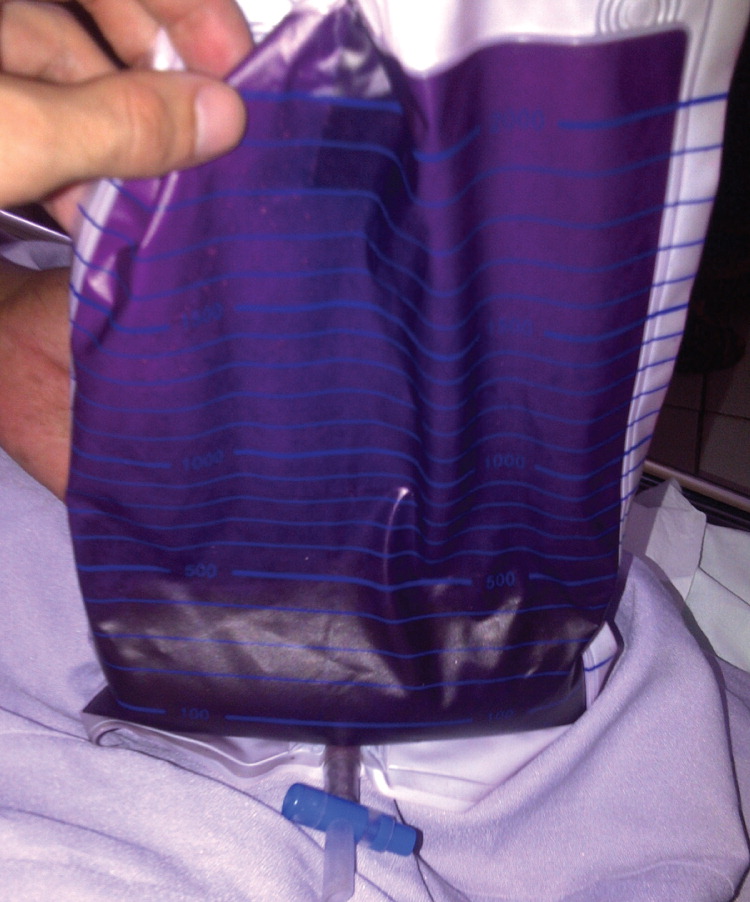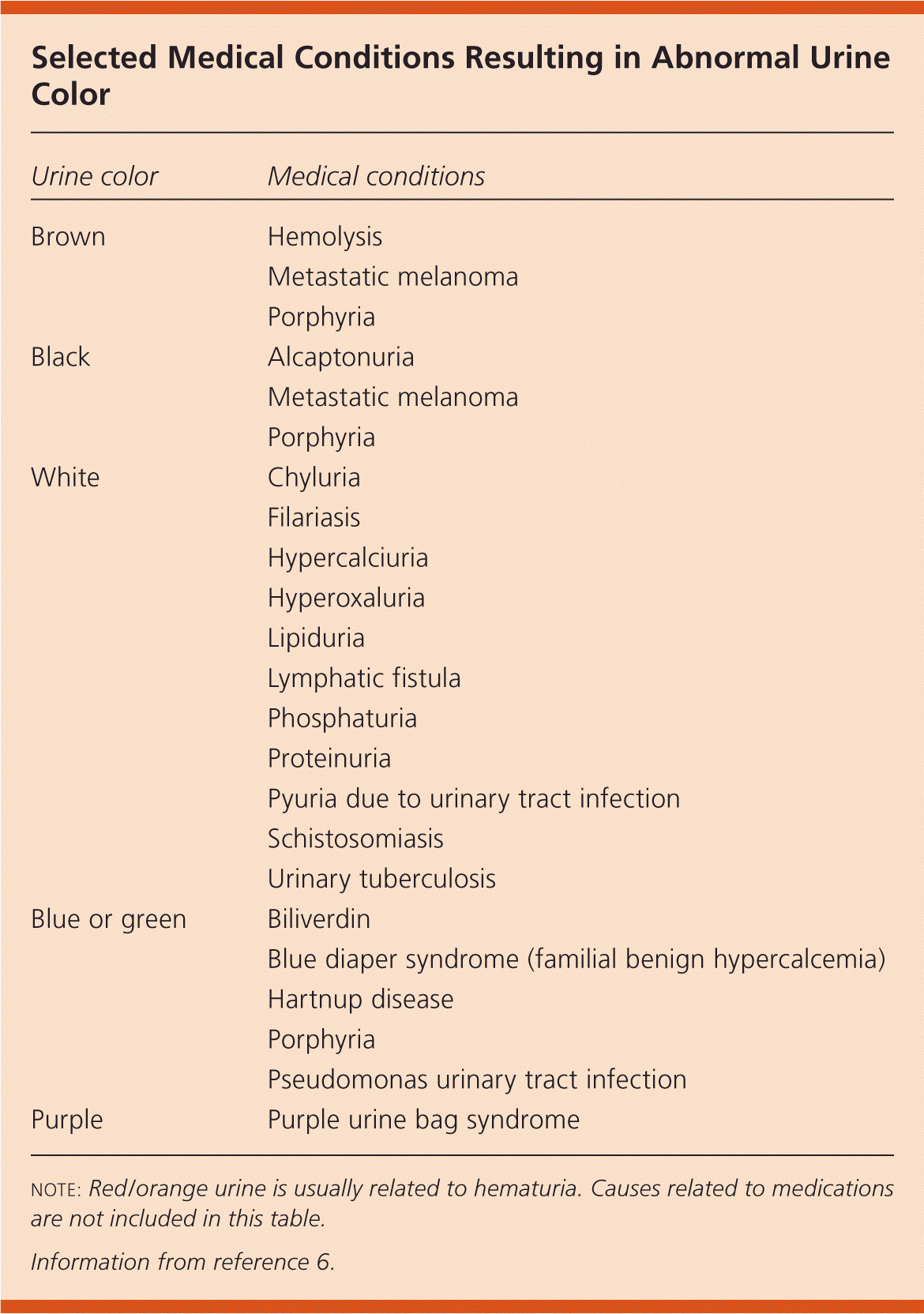
Am Fam Physician. 2016;94(7):572-574
Author disclosure: No relevant financial affiliations.
A 50-year-old woman presented for a routine catheter change. The patient was wheelchair-bound because of a history of transverse myelitis. She had urinary incontinence and was dependent on chronic urinary catheterization. The patient had no symptoms beyond discolored urine. There was no dysuria or blood around the catheter. She had no history of trauma to the catheter.
On examination, she was afebrile and well appearing, but the urine in her catheter bag looked purple (Figure 1). She did not know how long her urine had been discolored. Urinalysis showed leukocytes and microscopic hematuria. The urine was sent for culture.

Question
Discussion
The answer is E: purple urine bag syndrome. The urine's purple shade (which leads to staining of the catheter's bag and collecting tube) is caused by the accumulation of tryptophan metabolites. Dietary tryptophan is metabolized by gastrointestinal bacteria, which results in indole production. Indole is converted to indole sulfate in the liver. Indole sulfate in turn is acted on by bacterial enzymes, resulting in the production of indirubin (which is red) and indigo (which is blue). These metabolites concentrate in the urine, and the combination of red and blue pigments produces the purple discoloration.1
Purple urine bag syndrome is more common in older women with chronic urinary catheters,2 and it may be associated with constipation, dehydration, and alkaline urine. The condition has also been associated with intussusception.3 Most persons with purple urine bag syndrome are not seriously ill, although the condition is associated with several bacterial infections. Causative organisms include Providencia, Citrobacter, Enterobacter, Klebsiella, Morganella, Staphylococcus, and Streptococcus.4 It has been suggested that the urine is not purple but brownish-red, and that the urine bag is discolored purple. This may be because of a reaction of the indirubin and indigo pigments with the lining of the bag and catheter.5
Many medications, foods, dyes, and medical conditions can cause urine discoloration. A 2012 review details the differential diagnosis of abnormally colored urine and includes more than 75 items. The differential diagnosis for purple urine or a purple urine bag seems to be limited to purple urine bag syndrome, however.6
Eating excessive amounts of blackberries, beets, or carrots is associated with red, but not purple, urine. The medication isoniazid often results in orange urine. The medication nitrofurantoin can produce brown or black urine. White, blue, and green urine are also possible. Familial benign hypercalcemia is sometimes termed blue diaper syndrome because this rare condition is associated with blue urine.6

| Urine color | Medical conditions |
|---|---|
| Brown | Hemolysis |
| Metastatic melanoma | |
| Porphyria | |
| Black | Alcaptonuria |
| Metastatic melanoma | |
| Porphyria | |
| White | Chyluria |
| Filariasis | |
| Hypercalciuria | |
| Hyperoxaluria | |
| Lipiduria | |
| Lymphatic fistula | |
| Phosphaturia | |
| Proteinuria | |
| Pyuria due to urinary tract infection | |
| Schistosomiasis | |
| Urinary tuberculosis | |
| Blue or green | Biliverdin |
| Blue diaper syndrome (familial benign hypercalcemia) | |
| Hartnup disease | |
| Porphyria | |
| Pseudomonas urinary tract infection | |
| Purple | Purple urine bag syndrome |
